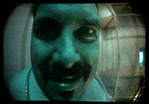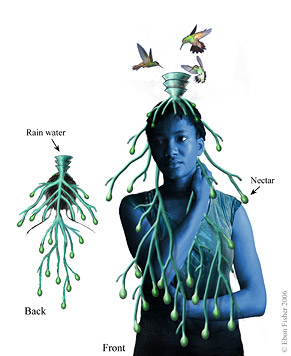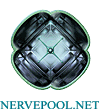
THE HYPERHIVE OF THE NERVEPOOL
RIPPLES IN THE NERVEPOOL
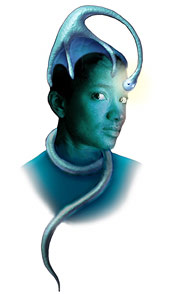
Glooky's symbiotic organism helps
her to see in the dark
In parallel with the Hyperhive's evolution from "hypercube" to "hyperforest," an alternate world has gradually emerged. In 1993 I began work on a screenplay for a fantasy involving characters living in a hypercube and working through strange bionic problems. It was an attempt to give form to some of the odd and delicious clashes of information, technology and organisms of our times. Testing some of the screenplay in a pilot video, I worked with cinematographer, Carlton Bright, and a small ensemble of actors, Ruthie Austen, Cynthia De Moss and Frank Senger. Performance artist, Amy Shapiro, and designer, Todd Le Felt, also assisted in these video experiments.
Actor, Frank Senger, in the HyperhiveInvited to set up a digital arts program at the University of Iowa in 1998, I had to suspend this pilot production and abandon the hypercube set (an early incarnation of the Hyperhive). Once my digital program was under way I found time to reflect on the 20 hours of video that had been shot. Jumping back into the screenplay, I decided to move the central metaphor of the production from that of coping with technology, to coping with the broader biological environment. Although this may seem to echo the move from industrial Brooklyn to agrarian Iowa, I had already begun to emphasize biological themes in my media rituals. 1993's Web Jam, for example, involved 2,000 participants in an emergent, biological approach to event formation. That 15-hour multi-disciplinary hive was dubbed "Organism."
Nerve Mama drinking water in the HyperhiveIn the new screenplay, every reference to technology was transmuted into some kind of biological equivalent. The set design, which I began to explore in Lightwave 3D, underwent a similar shift. The rectilinear hypercube of the AlulA phase gave birth to a far more curvilinear hive of poles and terraces. The structure's name also mutated from AlulA to OlulO to The Hyperhive. The network symbols which I intended to incorporate into the earlier production, the Bionic Codes, evolved into Zoacodes (or living codes).
I have since written 18 episodes of Ripples in the Nervepool, rendered 3D animated fly-throughs of the set, wrote and recorded a theme song, developed 60 or more Zoacodes, and designed a number of symbiotic creatures which the characters wear as living garments or "personal ecosystems." Below are a some of the characters from latest version of the production. The model is Courtney Becks, one of my students from the University of Iowa. The eye in Nerve Mama is that of Stavit Allweis, an old friend from Brooklyn. The eye was shot during an early media ritual, the "Eyeball Scanning Party."
:
Treen with a "water wig," which takes in rain water
at the top and produces nectar in a cascade of bulbs.
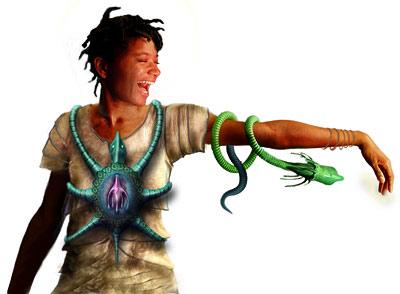
Sluker wearing a turtle creature which is incubating Nerve Mama's "Nerve Baby."
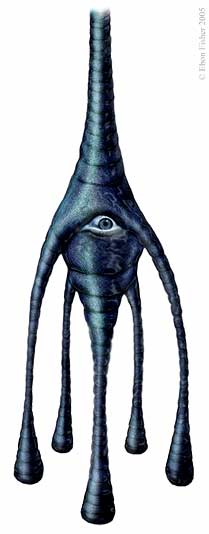
Nerve Mama
The Nervepool and its Hyperhive are "transmedia organisms" living in a public garden of media and feedback systems. I invite you to jump in with your thoughts, criticisms and suggestions. Please send us email through the link below. We are also very interested in speaking with producers and sponsors for Ripples in the Nervpool. A much larger treatment of the television series is available.
__________________
© 2006 Ebon Fisher
